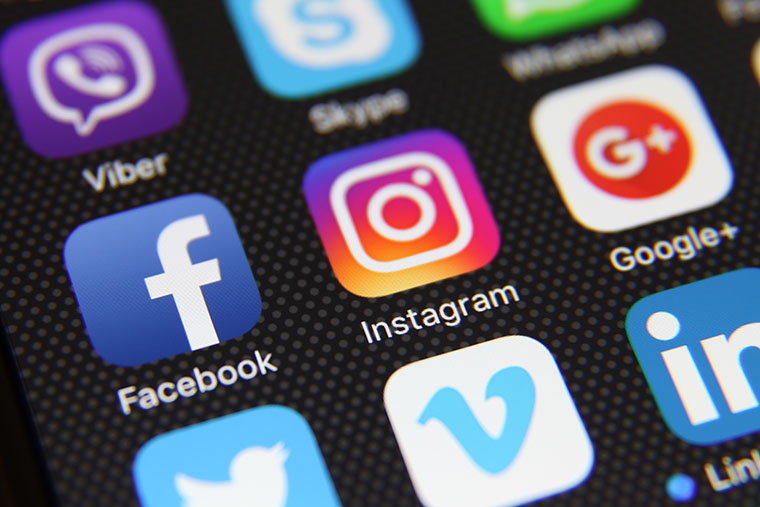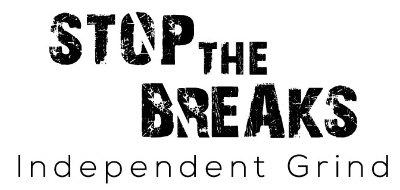
As an independent artist or band, effective promotion is what you need in order to get seen and heard by venues, collaborators, labels and new fans. But, as an indie musician it’s tough to get that kind of marketing when you don’t have the budget or the resources to do so.
That’s why social media is probably one of the most effective tools when it comes to self-promotion. Sure, it’s not a magical solution that’s gonna get you the tour and contract of your dreams; however, it is a foolproof way to grow your fanbase, get people visiting your streamed content and increase the headcount at your gigs.
A necessary evil
We live in an age where everybody and everything is available online for the world to see. This can get pretty tiresome, but for artists the process of building and maintaining a solid social media presence is a necessary evil.
Just look at the numbers: Instagram has just over a billion active daily users, whilst Facebook has double that at two billion – that’s a pretty huge chunk of the world’s population.
Having a smart social media presence, complete with optimised content, also highlights you or your band as professionals within the industry.
Not only can you use it to communicate with fans, it’s also a great way to build up relationships with brands, promoters and bookers, and record labels – especially if you don’t currently have a website. Your online presence is exactly that: a digital extension of everything you are about as an artist.
However, not all social media websites and platforms are created equal, and getting started as a musician can be pretty tricky. So where you should begin?
The Classic Platforms
First off, it’s useful to think about how people will look for your profiles online. The vast majority of people will search for you via Google, or directly on the platforms themselves.
Whilst content-streaming platforms like Twitch certainly bring in the viewers and income for eSports players and online poker pros, it’s good ol’ Facebook, Twitter and Instagram that can deliver the best results for independent artists and bands.
Industry analysts Music Watch recently ran a comprehensive survey profiling the social media habits of music fans, and found out that 63% of web users (that’s two out of three) discover new bands and artists to listen to via social media.
60% of users also visit streaming services to listen to more after checking out updates, tweets or Insta posts. Furthermore, 50% of both the surveyed Twitter and Instagram users follow or regularly receive and view posts and updates from musicians and bands. The audience is already there, you’ve just got to find a way to stand out so they’ll notice you.
Getting started with your profiles
Your first priority should be to create clear, clean and optimised profiles on your chosen platforms. No matter how avant garde or out there your sound is, in the world of social media your profiles need to be easy to understand and pull focus to the most important information.
You can optimise your profiles straight away by adding in the most timely links to your bio or profile (think new album or single, tour or gig, merchandise etc) and ensuring that any photos you use for profile and covers are properly sized (make sure they’re uniform across your various profiles to help build your brand).
The information included in your profile or bio should be completely up to date; make sure you include your current tour dates and professional email addresses only. Once you’ve got your profiles properly set up, you can start getting creative.
Getting started with your profiles
Your first priority should be to create clear, clean and optimised profiles on your chosen platforms. No matter how avant garde or out there your sound is, in the world of social media your profiles need to be easy to understand and pull focus to the most important information.
You can optimise your profiles straight away by adding in the most timely links to your bio or profile (think new album or single, tour or gig, merchandise etc) and ensuring that any photos you use for profile and covers are properly sized (make sure they’re uniform across your various profiles to help build your brand).
The information included in your profile or bio should be completely up to date; make sure you include your current tour dates and professional email addresses only. Once you’ve got your profiles properly set up, you can start getting creative.
Creating content
As far as what content you should post goes, that’s entirely up to you! Check out the profiles of your favourite artists for inspiration, but don’t try to copy exactly what they do.
You want to use social media as a window into your world; most of the time fans will want to see you in action as well as find out when you’ll be playing their favourite venue or dropping a new album or song.
A good mixture of content includes professional stuff, behind the scenes stuff and shout-outs to fans, bands you play with etc.
Even though it may seem like a case of repeating yourself across the different platforms, when it comes to announcements such as a new gig or tour or release dates, make sure you post this stuff on all of your profiles.
The content sharing that’s available on each platform can also help you define what you want to post, e.g. you can get into some great interactions with fans on Twitter by asking them questions, make use of Instagram Live to share some juicy behind-the-scenes footage, and create separate Facebook events for each of your gigs or upcoming releases.
Social media is all about communication and connection, so if you want people to sit up and take notice of what you do don’t be shy about maximising its potential.



